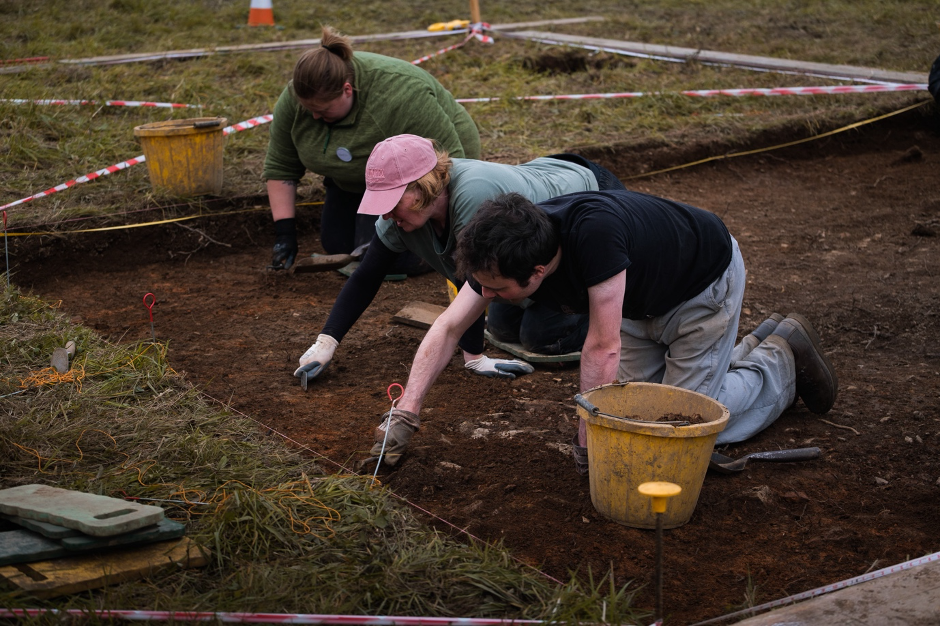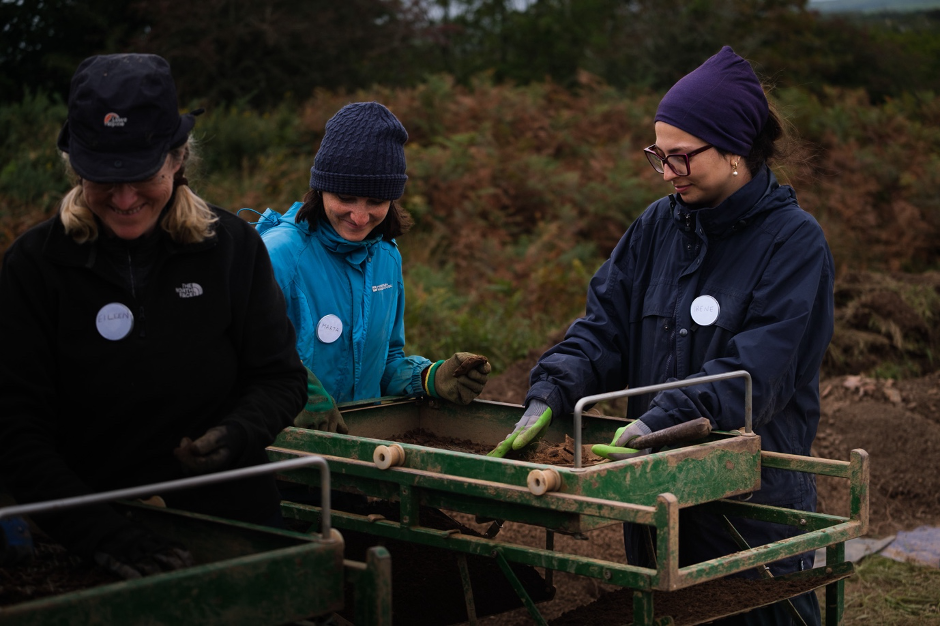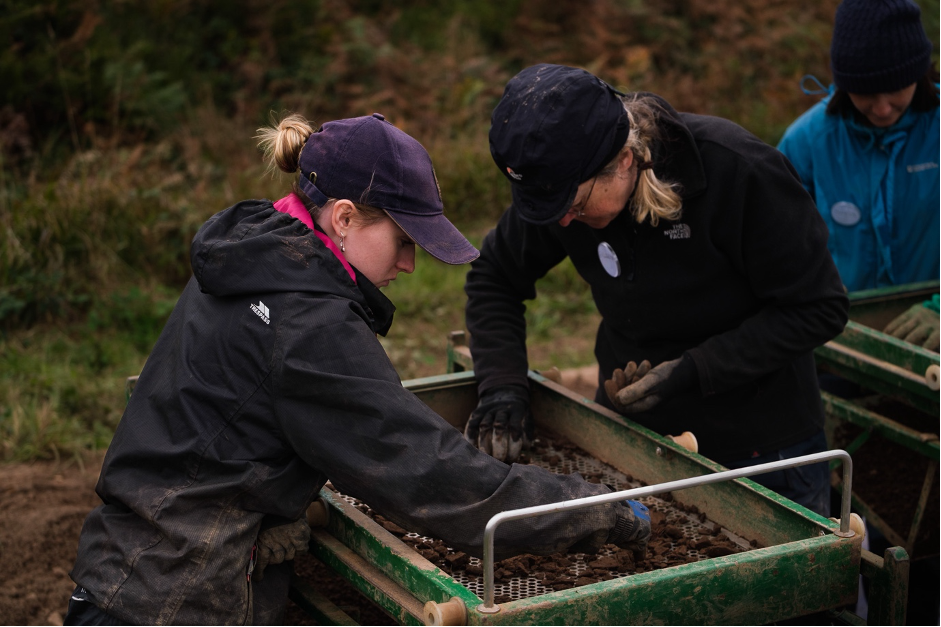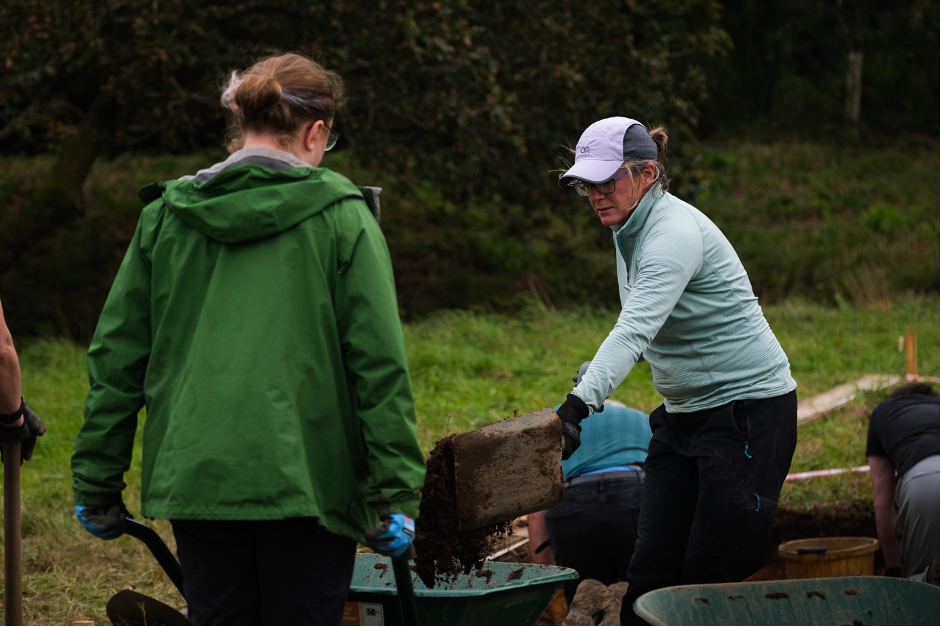Click here for the original blog post on the Cornwall Heritage Trust website
The Castilly Henge excavation was now underway, led by Historic England, in partnership with Cornwall Heritage Trust and Cornwall Archaeological Society.

Castilly Henge, located just off the A30 near Bodmin, has been described as ‘Cornwall’s ancient sacred heart’. The site is oval, consisting of a flat centre surrounded by an earthwork ditch and bank.
This is not the first excavation that has been undertaken on this henge, but seeks to build upon the findings of a 1962 excavation led by Charles Thomas for the Cornwall Archaeological Society. This excavation resulted in the suggestion that the remodelling of the earthworks at a later date was due to the henge’s use as a medieval plen-an-gwari.

Whilst there was little conclusive evidence from Thomas’ excavation of what this site would have been used for in its Neolithic origins, it has been theorised that the henge held “a focus for ritual and ceremonial activities for local and more distant communities.” Not only is it situated on the central spine of Cornwall, which would have been, and still is, the major east-west passageway for the area, but the presence of “several high-status barrows and burial mounds nearby” also support the proposition that the henge was an important cultural and social gathering site.

Subsequent non-invasive investigations by Historic England, including a 2022 geophysical survey, have informed the current excavation process. Two trenches will be dug: one on the exterior bank, expanding Charles Thomas’ Cutting 7, which will be used to obtain samples for Radiocarbon and Optically Stimulated Luminescence dating, and the other in the henge interior to examine anomalies that appeared during the geophysical survey.
Supervised by professional archaeologists from the Cornwall Archaeological Unit, volunteers are working both trenches. A call for volunteers from Cornwall Heritage Trust over the summer reflected the strong interest in the excavation. The next four weeks will see a rolling programme of volunteer works on the site, which will create widespread engagement with this henge and develop local expertise and experience. Spots were prioritised for Cornwall residents.

This Monday saw the volunteers remove the turf and a thick layer of topsoil on one part of a trench. The turf had already been cut, but removing it by hand was heavy work as the ground had been saturated by a night of heavy rain. Almost a foot of topsoil remained between the trowels of the volunteers and the stony layer of subsoil. The topsoil, a looser compaction of stones and mud, came up quickly to reveal the orange, clay layer of the subsoil. This layer was much denser, with a large number of stones in it. It is within this layer that the site is most likely to reveal any clues as to its uses and the activities that occurred here. Each stone was carefully removed and collected to be sieved in large pans. During this process, volunteers were looking out for any flints or stones that may have been used for working materials or as tools.
The day ended as the rain subsided. Mud, now dried on raincoats and waterproof trousers, was proof of a hard day’s work, but good progress had been made, and there was an air of excitement around what was to come.

